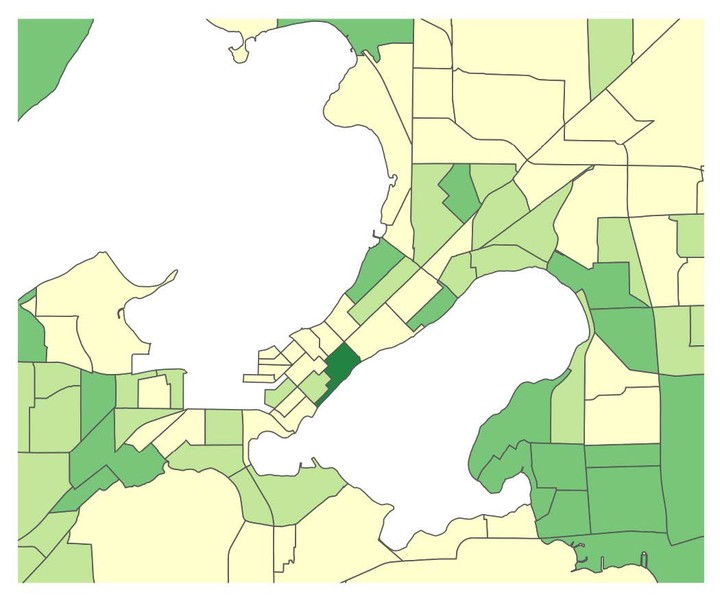The Role of Neighborhood in Individual and Disparity-Level Factors and Birth Weight in Dane County, Wisconsin

Abstract
Introduction: There are significant disparities in the rates of maternal and infant morbidity and mortality in the United States – a discrepancy of particular importance in Wisconsin, where Non-Hispanic Black women experience the highest mortality rates in the country. The adverse effects of neighborhood socioeconomic status and geographical distance to obstetrical care outcomes have been demonstrated previously, with poor neighborhood socioeconomic status having been linked to higher rates of preterm births and low birth weight infants, which both increase the risk of neonatal morbidity and mortality. The objective of this study was to investigate the contributions of Area Deprivation Index and geographic location on age-matched birth weight z-scores. Methods: We conducted a retrospective cohort study of all singleton births >22 weeks’ gestation in Dane County, Wisconsin, from January 2016 through June 2018. Generalized additive models were adjusted for race/ethnicity, cigarette use, delivery route, pregnancy-related or chronic hypertension, pregestational and gestational diabetes, number of prenatal visits, maternal age, total weight gain, and pre-pregnancy body mass index. Results: There is evidence of an association between birth weight z-score and spatial location (median P value 0.006). With area deprivation, we found no evidence of an association with birth weight z-score (-0.01; 95% CI, -0.03 to 0.01; P = 0.109). Mean birth weight z-scores were lowest (-0.72) in the urban center of Madison, while mean birth weight z-score was highest (0.18) in rural areas near the northeast, southeast, and southwest county borders. We found an effect of race/ethnicity on birth weight. Conclusions: We identified geographic variations in birth weight at a granular level using census block groups and a holistic measure of deprivation, which can inform targeted public health interventions. The lack of evidence of area deprivation on birth outcomes but significant spatial trends demonstrated continued geographic disparities in our health care systems.